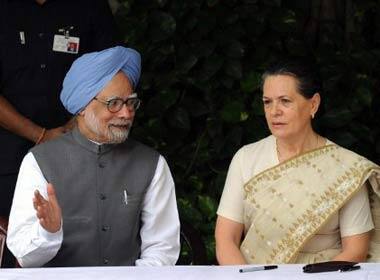Sometimes the best way to get a sense of the road ahead is to look into the rearview mirror. In the case of the Indian economy and its stock market, that view is particularly illustrative.
On 18 May 2009, a Monday, the Indian stock market was witness to history: within minutes of the market opening for trade, the Sensex shot up over 2,100 points, its largest single-day movement ever in absolute terms. The mood in the market was borderline manic.
That surge in investor sentiment was the consequence of the announcement two days earlier of the parliamentary election results, which came as a complete surprise and wrong-footed investors who had been short-selling the market.
The UPA had been returned to power, with a larger representation in Parliament. The Left parties, the erstwhile allies of the UPA, had been drubbed, and expectations of long-delayed big-bang economic reforms ran sky-high. For the first time ever, economists and analysts, long inured to India’s inability to deliver on its promises, admitted they were looking to double-digit growth rates.
Fast forward to two and a half years later. The UPA government announced today that it was putting its only serious reform effort of the past two years - to allow FDI in retail - on hold, because it could not convince the Opposition or even some of its own allies of the merits of the proposal. It was the final act of ritual humiliation for a government that has experienced several policy and political setbacks in these two-plus years.
[caption id=“attachment_149968” align=“alignleft” width=“380” caption=“The UPA’s failure to garner support for FDI in retail was the final act of ritual humiliation for a government that has experienced several policy and political setbacks in these two-plus years. Reuters”]
 [/caption]
[/caption]
On virtually every front of the economy, the news is grim. Growth is grinding down to its slowest pace in years, and inflation remains untamed. The rupee is in free fall, as are corporate earnings. The state of our public finances is perilous. Worse, we’re probably on the brink of a return to a balance of payments crisis of the sorts that we saw in 1991. And it could happen as early as next year, when a large chunk of foreign debt comes up for redemption, which will expose the foreign exchange fragilities that we face.
You can list countless reasons to account for the turnaround in sentiments from one of unbounded optimism to today’s down-in-the-dumps pessimism. But beyond all the cyclical elements that drive the economy or even the global structural changes that influence it, there is one overarching reason for India’s perennial underperformance. It relates to a colossal failure of leadership.
India’s problem, reasons Jim O’Neill of Goldman Sachs, in a recent interview to Economic Times , is one of a state of mind. “It all boils down to one issue: leadership.”
For all the boundless energy of a youthful nation, and for all the acclaimed academic wisdom of its economic policymakers, the political leadership betrays a fear that has paralysed all capacity to make and implement tough decisions.
The fear is born of ideological insecurity. We may damn the Left parties for their cussedness on many counts, but at least they know where they stand. The Congress, on the other hand, is a schizophrenic party that seeks to be all things to all people. Its economic policymaking team may boast of reformist credentials, but they are forever held hostage to the socialist-minded sections of the party who cannot see beyond the low hanging fruit of pandering to political constituencies through unfunded and deeply flawed social welfare programmes.
That criticism applies not just to the Congress, of course, although as the primary constituent of the ruling coalition, whose Prima Donna president is the presiding deity and the Prime Mover who sets the political agenda, it deserves much of the blame.
Even its allies such as the Trinamool Congress, long used to being in the Opposition and playing an obstructionist role, haven’t been able to slip into the idiom of governance. Among the fiercest critic of the retail FDI policy, Mamata Banerjee even received a back-handed compliment from CPI(M) leader Prakash Karat for having “hijacked” the issue.
The same criticism applies to the BJP, which finds itself unable to articulate a coherent and distinctive economic policy. Like the Congress, it too betrays a schizoid mindset: it now reflexively rejects everything that it stood for while it was in power, and rather than fill the political vacuum created by the Congress’ lurch to the left, it has ended up crowding the same space. The reformists in its ranks, who have impeccable credentials, have been effectively sidelined in favour of the champions of the swadeshi sentiment.
It doesn’t take much for the Indian economy to grow, as it now does, at 6-6.5 percent, given its billion-plus population. But the failure to go into a higher orbit of growth through enhanced labour productivity and by lifting up its people from the depths of social and economic deprivation represents a colossal tragedy. India’s flawed leadership - across the political spectrum - is holding the country back from realising its potential. What’s doubly tragic is that that leadership vacuum doesn’t seem about to be filled anytime soon.
Venky Vembu attained his first Fifteen Minutes of Fame in 1984, on the threshold of his career, when paparazzi pictures of him with Maneka Gandhi were splashed in the world media under the mischievous tag ‘International Affairs’. But that’s a story he’s saving up for his memoirs… Over 25 years, Venky worked in The Indian Express, Frontline newsmagazine, Outlook Money and DNA, before joining FirstPost ahead of its launch. Additionally, he has been published, at various times, in, among other publications, The Times of India, Hindustan Times, Outlook, and Outlook Traveller.
)